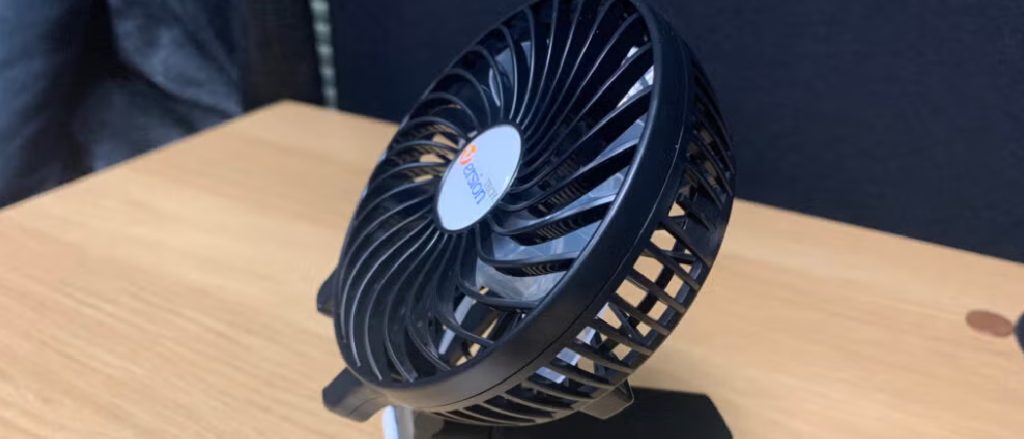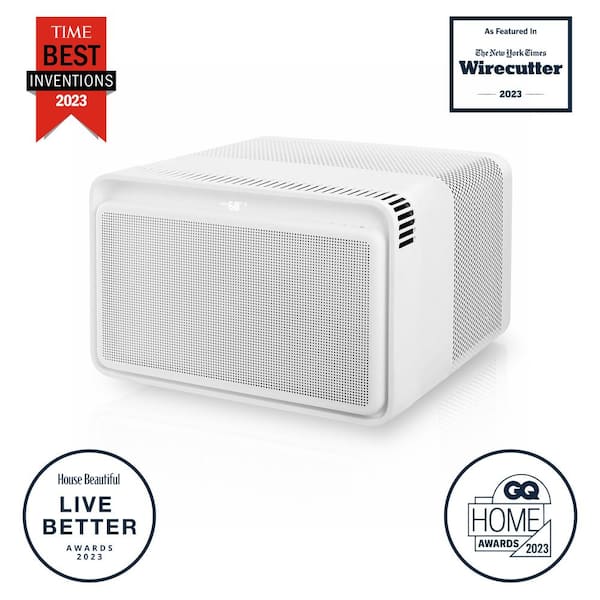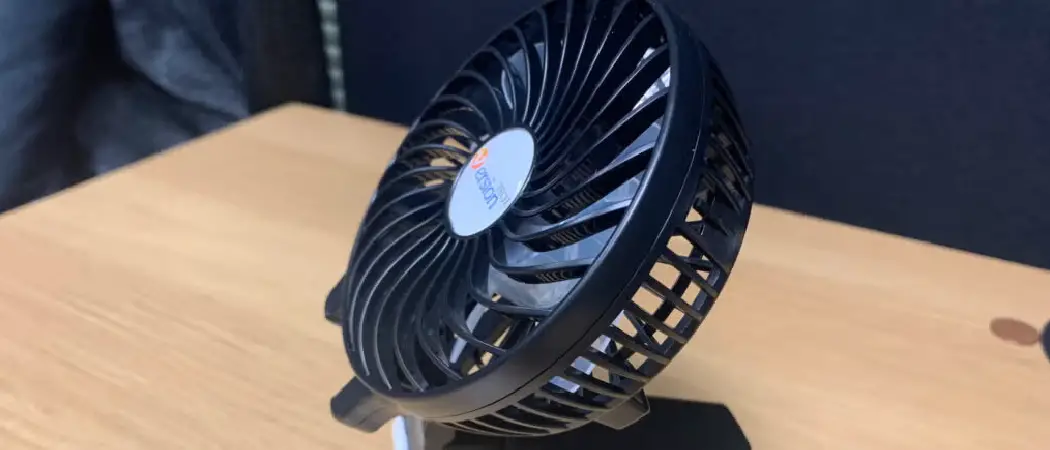To make your portable fans quieter, consider cleaning the blades, ensuring stability, and placing on a flat surface. Addressing any loose parts can also help reduce noise levels.
Quiet fans can create a more peaceful environment, ideal for relaxation or concentration tasks. Portable fans are a popular and convenient option for personal cooling needs. However, excessive noise from the fan can be distracting or disruptive. If you are looking to improve the overall experience with your portable fan, there are simple steps how to make my portable fans quieter.

By following some practical tips and maintenance routines, you can enjoy a more tranquil and comfortable environment while using your portable fan. This article will provide a guide on how to reduce the noise levels of your portable fan effectively.
Choose A Fan With Low Noise Level
Are you tired of the constant buzzing noise coming from your portable fan, disturbing your peaceful environment? Worry not! In this section, we’ll explore how selecting a fan with a low noise level can help alleviate this problem. Along with that, we’ll delve into two essential aspects to consider while choosing a fan with low noise – decibel rating and brushless motors.
1. Opt For A Fan With Decibel Rating
When searching for a portable fan, keep an eye out for the decibel (dB) rating. This rating indicates the intensity of the sound that the fan produces. The lower the decibel rating, the quieter the fan will be. Ideally, you should choose a fan with a decibel rating of 50 dB or below.
Considering your comfort and peace, it’s important to select a fan with a low decibel rating. This will ensure that you can enjoy a noise-free environment, whether you’re working, studying, or relaxing.
2. Look For Fans With Brushless Motors
Another crucial factor to consider while selecting a quiet portable fan is the type of motor it has. Opting for a fan with a brushless motor can significantly reduce the noise level.
Brushless motors operate silently and efficiently compared to their traditional counterparts. These motors eliminate the friction and mechanical noise associated with brushes, resulting in a smoother and quieter operation of the fan.
By choosing a fan with a brushless motor, you can enjoy the gentle breeze without the annoying distractions. Not only will it keep you cool, but it will also maintain the tranquil atmosphere you desire.
Clean And Maintain Your Fan Regularly
Regular cleaning and maintenance of your portable fan are crucial to keep it running smoothly and quietly. Here are some simple steps you can take to ensure your fan stays in top condition:
1. Remove Dust And Debris
First and foremost, remember to unplug your fan before starting the cleaning process. Use a soft brush or cloth to gently remove any dust or debris that may have accumulated on the fan blades and other components. This will help improve airflow and reduce noise levels.
2. Lubricate Moving Parts
Keeping the moving parts of your fan well lubricated is essential for reducing any friction that may be causing unnecessary noise. Use a silicone-based lubricant to grease the motor shaft and other moving components to ensure smooth operation and minimal noise.
3. Tighten Loose Components
Over time, the components of your fan may loosen, leading to rattling or vibrating noises. Regularly check and tighten any loose screws or bolts to prevent these issues. This simple maintenance task can greatly improve the overall performance and quietness of your portable fan.
Use Fan Noise Reduction Accessories
Reduce fan noise with accessories like a muffler, vibration pads, or a silencer to make your portable fans quieter. These tools help dampen sound, creating a more peaceful environment in your space.
Portable fans are a lifesaver during the scorching summer months, but the incessant noise can be a tad bit annoying. Fortunately, there are several fan noise reduction accessories that can help mitigate this issue.
1. Place The Fan On A Stable Surface
When using a portable fan, it’s crucial to place it on a stable surface to reduce vibrations which can be a significant source of noise. Ensure that the fan is on a sturdy, level surface to minimize unnecessary movement and rattling.
2. Use A Fan Silencer
A fan silencer, also known as a fan noise reduction box, can significantly dampen the noise produced by the fan. These specially designed enclosures reduce the noise levels by encapsulating the fan and minimizing the transmission of sound waves into the surrounding environment.
3. Attach Soundproofing Materials
Another effective method to quieten a portable fan is by attaching soundproofing materials, such as foam or rubber pads, to its base or any potential vibrating components. These materials absorb and dampen the sound, resulting in a much quieter operation.

Credit: www.amazon.com
Adjust Fan Settings To Reduce Noise
To reduce noise from portable fans, adjusting the fan settings can be effective. Lowering the fan speed or using oscillation mode can help minimize noise levels while still providing adequate air circulation. Additionally, placing the fan on a stable surface can prevent unnecessary rattling and further reduce noise.
When it comes to making your portable fans quieter, adjusting the fan settings can make a significant difference. By modifying the speed, utilizing the oscillation feature, and adjusting the fan angle, you can minimize the noise emitted by your fan, creating a more peaceful and comfortable environment. Let’s explore these techniques in detail:
1. Lower Fan Speed
Lowering the fan speed is an effective way to reduce noise while still enjoying the cooling benefits of your portable fan. Most modern fans come with multiple speed settings, allowing you to adjust the intensity of the airflow. By selecting a lower speed, the fan blades spin at a slower rate, resulting in reduced noise output. Experiment with different speed settings to find the sweet spot that provides the ideal balance between cooling and quietness.
2. Use Oscillation Feature
The oscillation feature found in many portable fans is a great tool for noise reduction. By enabling this feature, the fan rotates from side to side, distributing the airflow throughout the room. This not only increases the fan’s cooling effectiveness but also helps to disperse the sound, making it less noticeable. By spreading the noise over a wider area, the oscillation feature can create a more pleasant and even ambient noise.
3. Adjust Fan Angle
Another simple yet effective way to make your portable fan quieter is by adjusting its angle. Experimenting with different angles can help you find the optimal position that minimizes noise. For instance, pointing the fan towards a wall or a corner can help absorb and dampen the sound waves, reducing the overall noise level. Additionally, angling the fan away from your immediate vicinity can further decrease the noise disturbance, allowing you to enjoy a quieter environment without sacrificing cool air circulation.
| Step | Technique |
|---|---|
| 4.1 | Lower Fan Speed |
| 4.2 | Use Oscillation Feature |
| 4.3 | Adjust Fan Angle |
To make your portable fans quieter, adjusting the fan settings plays a crucial role. Lowering the fan speed, utilizing the oscillation feature, and finding the right fan angle can significantly reduce noise levels. Remember to experiment with different settings and angles to achieve the perfect balance of cooling and tranquility in your space.
Create A Quieter Environment
When it comes to making your portable fans quieter, creating a quieter environment can play a significant role. By taking a few simple steps, you can minimize external noise, mask the fan sound with white noise, and choose the right location for your fan. Let’s explore these strategies in more detail:
1. Block External Noise
To reduce the impact of external noise on your fan’s sound, it’s important to block out as much noise as possible. Here are some easy ways to accomplish this:
- Close windows and doors to minimize outside sounds from entering your room.
- Use heavy curtains or blinds to block noise from neighboring rooms or outside traffic.
- Add weatherstripping or draft stoppers around windows and doors to minimize air leaks and further reduce noise infiltration.
2 .Use White Noise To Mask Fan Sound
White noise can be an effective tool to mask the sound of your portable fan. By creating a consistent background noise, it helps to drown out the fan’s sound and create a more peaceful environment. Consider the following options:
- Invest in a white noise machine specifically designed to produce soothing background sounds.
- Download a white noise app on your smartphone or tablet and play it while your fan is running.
- Play calm, ambient music or nature sounds in the background to provide a pleasant masking effect.
3. Choose A Quieter Fan Location
The location of your portable fan can greatly influence its perceived noise level. By selecting the right spot for your fan, you can enjoy a quieter environment. Consider these factors:
- Place the fan on a stable surface to prevent vibrations that can amplify noise.
- Ensure proper airflow by keeping a distance between the fan and any obstacles, such as furniture or walls.
- Experiment with different positions and angles to find the sweet spot where the fan produces less noise.

Credit: www.homedepot.com
Frequently Asked Questions For How To Make My Portable Fans Quieter
Why Is My Portable Fan So Loud?
Your portable fan may be loud due to a build-up of dirt and debris, a loose or damaged fan blade, or motor issues. Regular cleaning and maintenance can help reduce the noise. Consider seeking professional help if the problem persists.
How Do I Reduce The Noise Of My Fan?
To reduce fan noise, clean it regularly, tighten loose screws, lubricate moving parts, and place rubber pads underneath.
How Can I Make My Cooling Fan Quieter?
To make your cooling fan quieter, try these steps: 1. Clean the fan blades and remove any dust or debris. 2. Ensure the fan is properly installed and securely mounted. 3. Use rubber or silicone dampening pads to reduce vibrations.
4. Consider replacing the fan with a quieter model. 5. Adjust the fan speed settings in your computer’s BIOS or software.
How Do I Reduce The Noise Of My Table Fan?
To reduce the noise of your table fan, try cleaning the fan blades and the surrounding area to remove dust. Lubricate the motor and tighten any loose screws. Place a rubber mat or foam pad underneath the fan to absorb vibrations.
Consider investing in a quieter fan model.
Conclusion
With these simple steps, you can effectively reduce the noise level of your portable fans. Implementing these solutions can enhance your comfort and overall satisfaction with your fan usage. By addressing the noise issue, you can enjoy a quieter and more peaceful environment.
Quieter fans equal a happier you!

